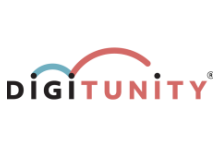As an independent, national nonprofit organization focused on advancing digital equity through device ownership, Digitunity is unique in the digital inclusion landscape. Together with our predecessor organization, our body of work connecting donors of technology with recipient organizations serving people in need spans 40 years. Hundreds of thousands of people have benefitted since the organization's inception. Digitunity’s perspective has been shaped by these decades of experience, ... Read More
As an independent, national nonprofit organization focused on advancing digital equity through device ownership, Digitunity is unique in the digital inclusion landscape. Together with our predecessor organization, our body of work connecting donors of technology with recipient organizations serving people in need spans 40 years. Hundreds of thousands of people have benefitted since the organization's inception. Digitunity’s perspective has been shaped by these decades of experience, creating local impact through the benefit of a national lens.
At Digitunity, we are firm in our belief that owning a computer is the foundation of digital equity. The device ownership gap, or the divide between those with and without a connected computer at home, is a nationwide issue that is multifaceted and pervasive, affecting over 47 million people in the United States. Computers are no longer luxuries, but necessities, providing critical links to most aspects of everyday life, including economic mobility, healthcare, commerce, civic participation, and social connectedness. The National Skills Coalition underscores the importance of digital skills, reporting that 92% of jobs in the United States now require them.
We stand at a pivotal moment in the pursuit of digital equity in our country, with a $65 billion federal investment now underway to expand broadband infrastructure across the United States. This monumental commitment signals progress, but its success is interwoven with a critical requirement – a substantial expansion in the supply and availability of free and affordable computers for people who are marginalized. This is an essential piece of the overall solution that cannot be overlooked.
Recognizing this, it becomes clear that the path to overcoming this persistent supply challenge lies in a multi-pronged strategy that includes not only new device purchases, but accessing excess and retired IT assets from the corporate sector and other large institiutions as well. Our strategic approach is to transform the way corporate, government, and institutional IT assets are managed, and to do so at scale. Repurposing previously used technology for community support will make computer ownership attainable for more people.
Hide Full Text
